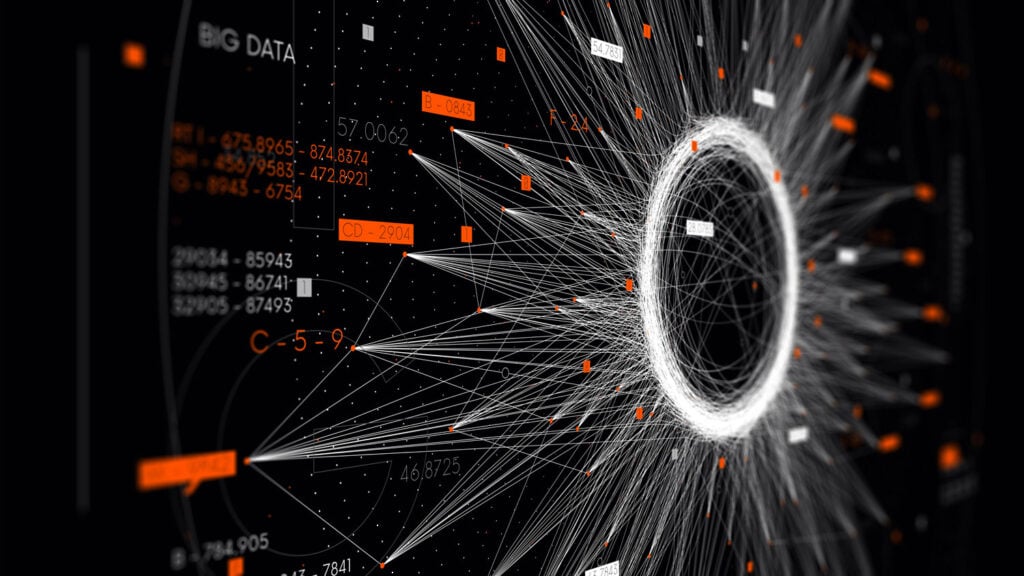In the fast-paced world of tech, your proprietary algorithm is your secret weapon. It’s that unique, game-changing set of rules that sets your company apart and keeps your competitors in the dark.
This article explores the intricacies of how proprietary algorithms function, their significant advantages, and their transformative influence on the success of startups. Safeguarding these algorithms as part of your intellectual property is essential. Without proper safeguards, your competitive edge could be compromised, opening the door for competitors to replicate your innovations.
By securing patents and implementing robust confidentiality measures, you can ensure that your proprietary technology remains exclusive and continues to drive your business forward.
Understanding Proprietary Algorithms
Private companies extensively utilize proprietary algorithms, maintaining exclusive control over these vital technological components. Startups, in particular, find these algorithms to be game-changers as they navigate the competitive landscape. Such algorithms follow predefined sequences to process input data and generate output via their distinct code execution processes. The advantage of this exclusivity lies in the superior efficiency it can provide. It also means that customization is limited, and users must depend on the originating company for updates and assistance.
In the current AI boom, the importance of proprietary algorithms cannot be overstated. They are the backbone of many innovative solutions, driving advancements in machine learning, predictive analytics, and automation. For startups, leveraging these algorithms can mean the difference between success and stagnation. Open-source alternatives stand in stark contrast by offering unfettered access to their underlying code, thus allowing individual modification and widespread sharing. This level of transparency promotes a collaborative development environment but may result in less refined performance when compared with proprietary solutions. For businesses and developers making strategic decisions about algorithm deployment, striking a balance between gaining control versus embracing adaptability proves crucial.
The significance of using proprietary algorithms is underscored within numerous sectors, including those implementing predictive policing or utilizing advanced machine learning techniques for driving forward progress and operational effectiveness. It’s critical to recognize that these algorithms are entrusted with key decision-making tasks based on the data provided to them—highlighting the importance of ensuring they operate transparently and adhere to ethical standards upon implementation.
The Role of Proprietary Algorithms in Modern Technology
The advancement of modern technology is deeply reliant on proprietary algorithms, which have seen substantial growth over the last twenty years. These sophisticated mathematical models have led to significant advancements in areas such as predictive policing. In a variety of sectors, from finance to health care, these specialized algorithms are critical for improving and powering numerous technological functions, cementing their role as vital components within our digital era.
Take Google’s search engine – its bespoke algorithms meticulously assess various elements like website loading speed and mobile device compatibility to refine the experience for users conducting searches. As Artificial Intelligence (AI) merges with the Internet of Things (IoT), there’s an increasing shift toward immediate data processing and autonomous decision-making processes that rely heavily on these unique algorithms—evident in innovations including intelligent home systems and self-driving cars.
Groundbreaking technologies such as Quantum AI promise to expand existing capabilities by leaps and bounds. By bolstering data handling efficiency capable of addressing intricate optimization issues swiftly, Quantum AI represents a frontier pushing innovation throughout countless industries forward. Algorithms thus play a pivotal role. They not only dictate subsequent actions, but also form the core pillars upon which computing stands today—reshaping our engagement with technology at every turn into something newly dynamic within the digital realm.
Key Characteristics of Patentable Algorithms
Several critical attributes distinguish proprietary algorithms, separating them from those that are open-source. They typically possess a high degree of complexity, showcasing intricate mathematical models and distinct coding methodologies that give companies an advantage over competitors. The complexity serves a purpose: to fulfill unique business requirements and amplify the capabilities beyond what is possible with standard algorithms.
The particularity of these proprietary computer programs lies in their tailored development process which caters to specific objectives meant for competitive differentiation. As such valuable intellectual property, they are frequently safeguarded as trade secrets so that the techniques and processes used remain exclusive to the company, preventing competitors from gaining access.
In merging both complexity and specificity, organizations can engineer advanced machine learning algorithms designed for precise functions across various industries. These carefully crafted algorithms have the power to analyze data profoundly, guiding decisions and optimizing results effectively—thereby increasing productivity levels and fostering innovation within numerous sectors. Such integration underscores why maintaining propriety in software design is crucial for sustaining a robust edge in algorithmic decision-making within computer programming landscapes.
How Proprietary Algorithms Enhance Machine Learning
Our proprietary algorithms, which are central to advancing machine learning, utilize sophisticated models such as neural networks and significantly increase the accuracy of predictions. The complexity inherent in these advanced methods often results in a trade-off with transparency because it can be difficult to decipher their decision-making processes. By employing ensemble techniques that pool together multiple models’ advantages, we manage to offset individual weaknesses and heighten overall performance within various machine learning applications.
Having access to substantial quantities of proprietary data provides a crucial edge by enabling more effective training of our algorithms, thereby boosting their predictive prowess. For instance, Google constantly refines its search algorithm through iterations that factor in user interaction data, leading to greater relevance and precision in search results. Meanwhile, IBM Watson harnesses complex natural language processing algorithms designed to sift through immense datasets—uncovering insights and recognizing patterns beyond human capabilities.
Lastly, is the growing trend of using synthetic data for appraising the efficacy of proprietary algorithms without compromising confidential information—a practice gaining popularity among developers. A notable implementation can be seen with Tesla’s Autopilot technology. This system relies on cutting-edge machine learning methods that interpret sensory input from vehicles for semi-automated navigation purposes—an exemplar demonstrating how innovative application of these exclusive technologies holds potential to revolutionize entire sectors while streamlining procedural tasks.
Case Studies: Proprietary Algorithms in Action
In the realm of real-world implementations, the formidable capabilities of proprietary algorithms are vividly illustrated. We will delve into three seminal case studies herein: Tesla’s Autopilot System, Google’s Search Algorithm, and IBM Watson’s Data Analysis prowess. These instances underscore the pivotal role that proprietary software plays in fostering innovation, enhancing efficiency, and securing a competitive edge across various industries.
Tesla’s Autopilot System
The Autopilot feature of Tesla serves as an outstanding demonstration of the transformative impact that proprietary algorithms can have on an industry. This system operates using custom software crafted by Tesla and undergoes regular enhancements through updates, refining its autonomous navigation and decision-making capacity. It incorporates a suite of sensors and cameras to achieve a detailed 360-degree field of vision, which allows for precise object detection in close proximity.
Central to the functionality of Tesla’s Autopilot is its advanced deep neural network, which assimilates data gathered from eight strategically placed cameras around the vehicle. Through this setup, it gains proficiency by learning from sensory feedback, thus enabling adept navigation skills. For processing visual information in real-time with high accuracy, Convolutional Neural Networks (CNNs) are utilized. These networks are crucial for recognizing images and categorizing different objects like other cars or pedestrians.
Exceptional lane tracking abilities within the Autopilot system are achieved through sophisticated algorithms designed for reliable recognition and monitoring road lanes — key elements necessary for executing safe automated lane changes. The successful integration of machine learning techniques alongside tasks involving automated reasoning highlights how industries can be significantly reshaped thanks to innovations rooted in proprietary algorithms that also aim to elevate consumer experiences dramatically.
Google’s Search Algorithm
The search algorithm utilized by Google serves as an outstanding demonstration of proprietary algorithms at work. The objective in enhancing this proprietary software is to deliver superior responses to user queries with concise and precise answers. This ongoing enhancement process involves advanced machine learning algorithms that scrutinize elements including the speed at which pages load and their compatibility with mobile devices, assuring users are provided with search results that are both relevant and accurate.
This ability of the algorithm to adjust itself according to user behaviors and preferences underscores how proprietary technology can significantly improve customer interactions while securing a business’s position within its market. In determining which outcomes should be presented, these algorithms become invaluable assets in molding the online realm of information.
IBM Watson’s Data Analysis
IBM Watson harnesses the power of proprietary algorithms to execute natural language processing, enabling it to comprehend and scrutinize a vast array of unstructured data. These essential algorithms play a pivotal role in deciphering intricate queries and yielding significant answers, revolutionizing the way organizations utilize data for making informed decisions.
Through advanced machine learning algorithms, Watson is equipped with the proficiency to perform profound analysis on unstructured data, converting it into practical insights. The capacity to augment comprehension and utility of data underscores the importance of proprietary algorithms in propelling advancements and efficiency across diverse applications.
Protecting Your Proprietary Algorithm with Patents
Securing patents for proprietary algorithms can serve as a significant strategic asset, despite the various hurdles such as the extensive time and financial investments required without guaranteed outcomes. The protection that these patents offer is crucial. They deliver a legal safeguard to uphold intellectual property rights, which helps companies retain their competitive advantage.
While revealing information during the patent application process might be seen as risky due to mandatory public disclosure, it concurrently provides formal acknowledgment of one’s innovation. This recognition acts both as a deterrent against potential copycats and establishes grounds for legal action should others replicate the patented technology.
For firms engaged in creating advanced machine learning algorithms, obtaining patents is imperative. It not only shields their existing intellectual endeavors but also stimulates Advancement by protecting their proprietary technology from unauthorized use.
Patent Eligibility Criteria for Algorithms and Software Patents
The process of obtaining a patent for an algorithm necessitates adherence to rigorous eligibility requirements, which can often be quite demanding. For an algorithm to be considered for a patent, it must demonstrate that it is not only original but also involves an inventive step and has a technical aspect. This implies the algorithm should present something unique, non-obvious and provide utility beyond being merely abstract mathematical methodology.
To keep their proprietary algorithms secure from potential breaches or unauthorized access, organizations need to enforce strict confidentiality protocols while they work through the intricacies involved in securing patents. It’s crucial for them to show that their algorithms have practical uses because mere abstract ideas related to mathematics typically do not qualify for patent protection.
When companies grasp these prerequisites and adhere to them effectively, they are better equipped to safeguard their intellectual property rights. Doing so allows businesses to sustain their market position by preventing unwarranted access or use of their proprietary methods and concepts.
Algorithm Patent Examples
Patented algorithms in the real world offer compelling examples of how securing rights to intellectual property can yield practical benefits. A patented algorithm by Samsung, for instance, enables a drone to recognize faces and gestures, allowing it to interact with users. This innovation demonstrates the significance of proprietary algorithms in propelling technological progress and improving user interaction.
The Alexa smart speaker from Amazon is another instance where a patent covers its capability to react to conversational prompts and customize advertising based on what it discerns about users’ preferences. Such an application serves as evidence of how proprietary algorithms have substantial commercial value, particularly in enhancing personalized interactions.
Google has also patented an algorithm that delivers straightforward answers when users pose questions—a development that elevates search functionality beyond simple webpage referrals—thus illustrating the revolutionary potential these propriety innovations hold.
Collectively, these instances emphasize the critical role patents play in safeguarding proprietary algorithms so businesses may leverage their unique developments effectively and retain competitive superiority within today’s digital commerce landscape.
The Importance of Training Data and Input Data
The success of proprietary algorithms is often more dependent on the caliber of the training data than on the sophistication of the algorithms themselves. For an algorithm to discern patterns, it relies heavily on high-quality training data. Its accuracy in forecasting outcomes can be greatly impacted by this factor. Ensuring that this data is carefully collected and labeled with precision and substantial resources is a fundamental part of their development.
A model’s ability to perform reliably with unfamiliar information can be substantially improved through incorporating varied training data. This variance in input scenarios proves essential for uses such as predictive policing algorithms where diverse considerations must inform decision-making processes executed by these systems. By diligently refining training data, there’s potential for fostering more precise and equitable results, which diminishes bias tendencies and bolsters overall efficacy.
Challenges in Developing Proprietary Algorithms
Crafting proprietary algorithms comes with numerous difficulties that can greatly affect both innovation and performance. Securing top-tier training data is a substantial obstacle, as it often involves hurdles related to quality assurance, accessibility, and expense. Pinpointing what qualifies as unique and non-evident innovation for the sake of obtaining patents can be intricate and disputed.
Patent applications specific to AI encounter additional challenges such as assigning inventorship accurately and staying abreast of rapid technological advancements. These intricacies may obstruct the development and safeguarding of proprietary algorithms. It’s crucial for firms to adeptly circumvent these impediments in order to preserve their competitive advantage.
Future Trends in Proprietary Algorithms
The trajectory of proprietary algorithms is on the brink of considerable expansion and creativity. From 2013 to 2017, there was a remarkable surge in AI-related patent filings worldwide by an astounding 193%, signaling the quickening pace at which progress is being made in this realm. It’s anticipated that by 2025, as much as 95% of customer interactions could be powered by AI.
As these developments unfold, reciprocal licensing arrangements are becoming increasingly advantageous—they promote creative advancements while simultaneously minimizing legal disputes concerning intellectual property rights. There exists a potential hurdle: the swift advancement in technology may outstrip patented algorithms’ period of commercial relevance—this could undermine their lasting practicality.
It is critical for businesses to remain vigilant with respect to these shifts if they intend to utilize proprietary algorithms effectively for corporate growth and innovation initiatives.
Ethical Considerations and Public Policy
The employment of proprietary algorithms introduces significant ethical and policy challenges. Data privacy concerns are at the forefront, given that sensitive information might be disclosed to those who provide these algorithms. The private nature of such algorithms also obstructs public scrutiny, prompting questions about how accountable and fair their use is.
While trade secrets play a vital role in safeguarding these proprietary systems, they can obscure operations and impede the discovery of immoral practices. Biases embedded within training data may propagate inequities, emphasizing the necessity for inclusive datasets and ethical considerations during the development phase of an algorithm.
As legal parameters continue to evolve, there’s a pressing need for them to contend with these issues effectively so that proprietary algorithms are employed both responsibly and with sufficient transparency.
Summary
Proprietary algorithms serve as the backbone for numerous technological advancements, propelling breakthroughs and augmenting productivity in a range of sectors. These algorithms stand out due to their intricate complexity and distinct nature, with training data playing an indispensable role in honing their capabilities. Despite hurdles related to creation and intellectual property rights protection, emerging trends and moral implications underscore the continual development and significance of proprietary algorithms. In this rapidly evolving domain, grasping the nuances of these unique algorithms is key to maintaining a competitive edge while cultivating ethical advances.
Frequently Asked Questions
What are proprietary algorithms?
Proprietary algorithms are unique algorithms created and owned by private companies, providing competitive advantages while restricting access and usage rights to them. Their complexity and exclusivity often make them integral to a company’s strategy and success.
How do proprietary algorithms enhance machine learning?
Utilizing sophisticated models and large quantities of exclusive data, proprietary algorithms substantially improve machine learning. This leads to improved predictive abilities and enhances overall performance.
The combination of unique data and tailored modeling approaches results in more precise and reliable results.
What are some examples of patented algorithms?
Some examples of patented algorithms include Samsung’s drone featuring facial and gesture recognition, Amazon’s Alexa, which personalizes advertisements, and Google’s search algorithm that delivers direct answers to user queries.
What are the challenges in developing proprietary algorithms?
The creation of proprietary algorithms involves overcoming hurdles like securing superior training data, pinpointing unique elements to patent, and maintaining pace with rapidly changing tech trends.
Tackling these concerns is essential for the triumphant development of an algorithm.
What ethical considerations are associated with proprietary algorithms?
Ethical issues such as data privacy, transparency deficits, and potential biases during training are notably raised by the use of proprietary algorithms.
It is vital to tackle these concerns in order to promote responsible and accountable development of proprietary algorithms.




